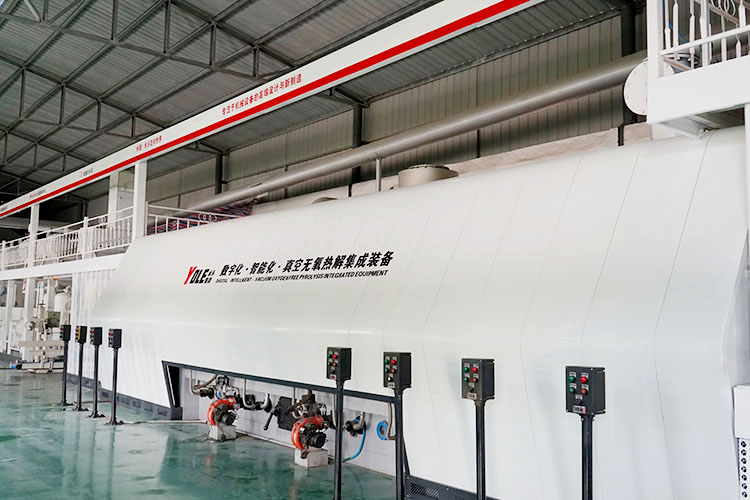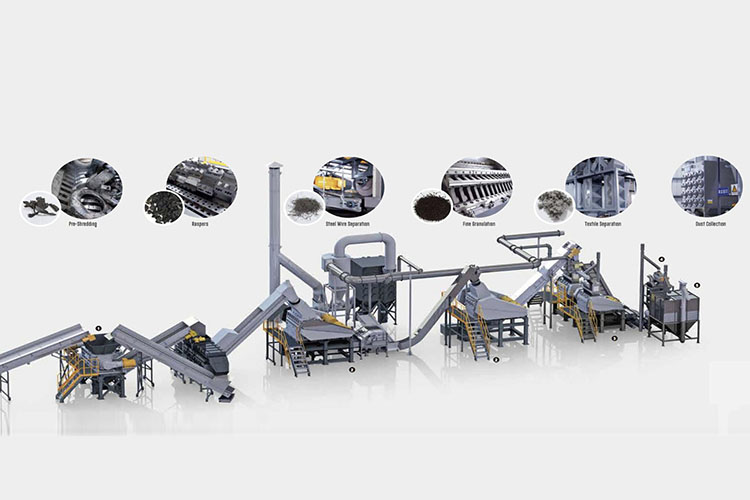With the continuous advancement of industrialization and urbanization, solid waste treatment has become an important environmental issue. Traditional solid waste treatment methods, such as landfill and incineration, have drawbacks such as occupying land resources and generating secondary pollution. High temperature anaerobic pyrolysis technology, as an emerging solid waste treatment technology, has gradually attracted attention and application due to its high efficiency and environmental protection characteristics.

Pyrolysis technology is a process of heating organic matter at high temperatures to undergo pyrolysis reactions in anaerobic or anaerobic environments, generating gas, liquid, and solid products. The pyrolysis products mainly include combustible gases (such as hydrogen, carbon monoxide, methane, etc.), liquid tar, and solid carbon. According to the different pyrolysis temperatures, the pyrolysis process can be divided into low-temperature pyrolysis (300-500 ℃), medium temperature pyrolysis (500-700 ℃), and high-temperature pyrolysis (above 700 ℃). High temperature anaerobic pyrolysis technology, which conducts anaerobic or anaerobic pyrolysis under high temperature conditions above 700 ℃, has the advantages of high pyrolysis efficiency, abundant gas products, and few solid residues. It is particularly suitable for treating solid waste containing high organic matter components, such as urban household waste, sludge, waste plastics, waste rubber, etc.
The high-temperature anaerobic pyrolysis equipment mainly consists of feeding system, pyrolysis reactor, cooling system, gas purification system, tar recovery system, and carbon residue discharge system.
The feeding system is responsible for transporting solid waste raw materials to the pyrolysis reactor, generally including conveyor belts, screw feeders, etc. The pyrolysis reactor is the core part of the pyrolysis process, which heats solid waste raw materials to high temperatures through heating devices (such as electric heating, gas heating, etc.), promoting their pyrolysis reaction. The cooling system cools the gas and liquid products produced by pyrolysis for subsequent separation and recovery. The gas purification system purifies the pyrolysis gas, removing impurities and harmful components to meet the standards for utilization. The tar recovery system typically uses equipment such as condensers and oil-water separators to recover and treat liquid tar generated during pyrolysis. The carbon residue discharge system discharges and collects the solid carbon residue remaining after pyrolysis for further utilization or disposal.

High temperature anaerobic pyrolysis technology can convert organic substances in solid waste into combustible gases and liquid tar, greatly reducing the volume and quality of solid waste, and achieving significant reduction effects. The combustible gases and liquid tar produced by pyrolysis can be used as energy, while solid carbon residue can be used for soil improvement, preparation of activated carbon, etc., to achieve resource utilization. The process is carried out in anaerobic or anaerobic environments, avoiding the generation of harmful substances such as dioxins, reducing pollutant emissions, and being environmentally friendly. Suitable for handling various types of solid waste, including urban household waste, sludge, waste plastics, waste rubber, etc., it has a wide range of application prospects.
In the treatment of urban household waste, high-temperature anaerobic pyrolysis technology can efficiently treat waste with high organic matter content, reduce the pressure on landfills, and convert waste into energy products.
Due to the large amount of organic matter in sludge, high-temperature anaerobic pyrolysis technology can convert the organic matter in sludge into combustible gases and liquid tar, reduce the volume of sludge, and achieve resource utilization.
Waste plastics are difficult to degrade, and traditional incineration treatment can easily produce harmful gases. High temperature anaerobic pyrolysis technology can convert waste plastics into fuel gas and liquid tar, reducing environmental pollution.
Waste rubber (such as waste tires) contains a large amount of organic matter, which can be converted into combustible gases and liquid tar through high-temperature anaerobic pyrolysis technology, achieving the resource utilization of waste rubber.
High temperature anaerobic pyrolysis technology, as an efficient and environmentally friendly solid waste treatment method, has broad application prospects. With the continuous progress of technology and the accumulation of application experience, high-temperature anaerobic pyrolysis technology is expected to play an increasingly important role in the field of solid waste treatment, contributing to the reduction, resource utilization, and harmless treatment of solid waste.
Yongle Environmental Protection is mainly engaged in the research and development, production and sales of complete sets of technical equipment for organic solid waste disposal and comprehensive utilization. Production and manufacturing, domestic waste treatment equipment, tire pyrolysis equipment, medical waste disposal equipment, hazardous waste disposal equipment, and achieve efficient and comprehensive utilization of resources through independently developed low-temperature anaerobic pyrolysis equipment technology solutions.
Tags:The application of high-temperature anaerobic pyrolysis equipment in solid waste treatment,high-temperature anaerobic pyrolysis equipment,YONGLE GROUP
 Latest news
Latest news


























